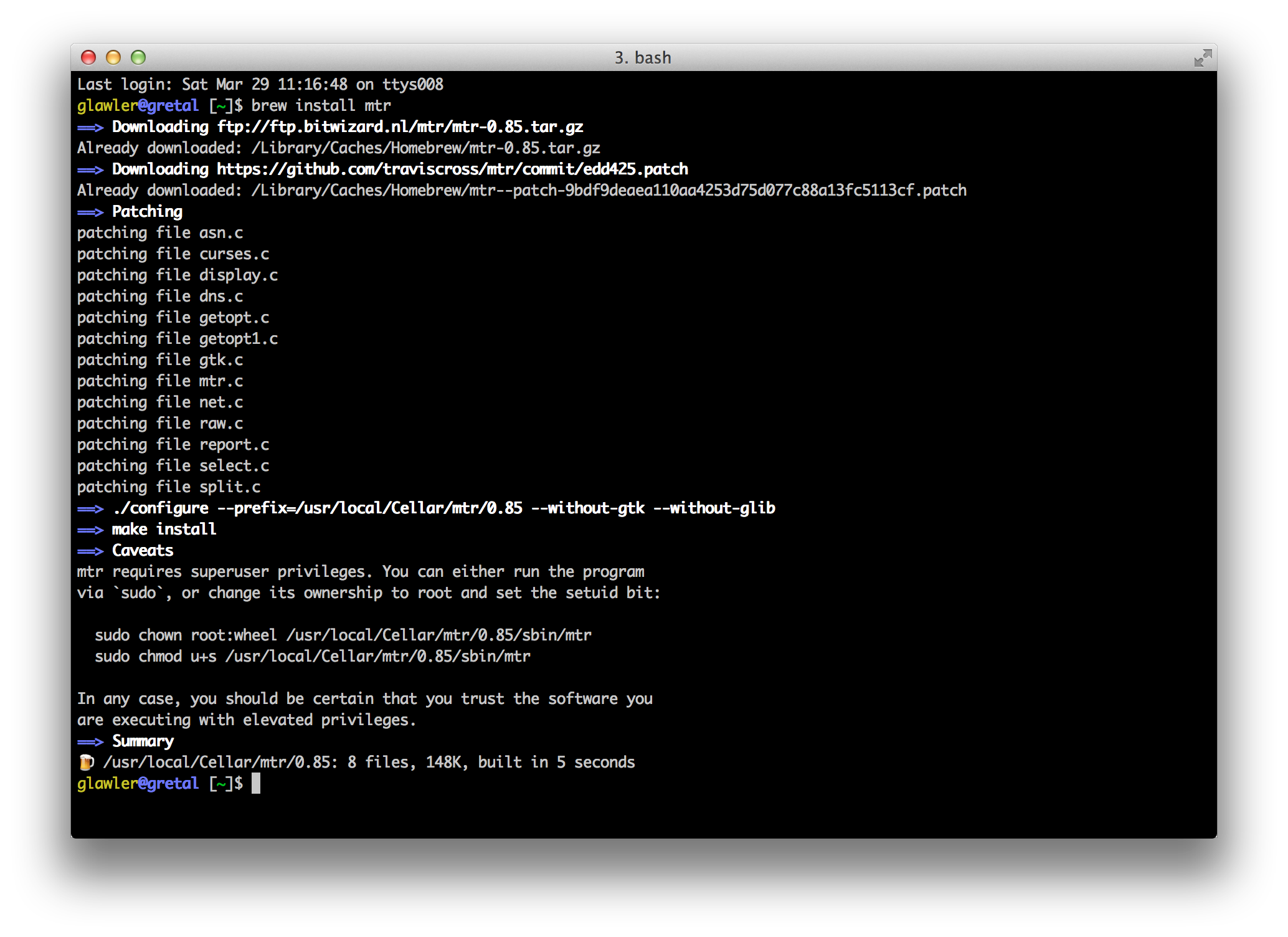

Terminal offers a broad range of unix tools and handy capabilities that are otherwise tucked under the hood of MacOS. New to Homebrew or just want a lead for some handy packages to try out? Check out some of best Homebrew packages for Mac. Remember if you uninstall Homebrew it will remove all packages associated with the tool, so you’d need to reinstall those again. You might want to reboot the Mac for good measure, but it may not be necessary (recall that rebooting clears tmp files and other caches. If you’re experiencing errors or quirks from a migrated Intel to Apple Silicon Mac, you may try uninstalling Homebrew and then reinstalling Homebrew, as it seems to resolve these issues: Homebrew is the easiest and most flexible way to install the UNIX tools Apple didn’t include with macOS.
HOMEBREW INSTALL MAC UPDATE
Many of the homebrew packages should work, but you may see various rosetta errors like “rosetta error: thread_suspend failed” sometimes, particularly when attempting to update Brew packages. What is Homebrew Homebrew or brew is the Missing Package Manager for MacOS. You will want to be sure you have Rosetta 2 installed on the Mac, as not everything is native yet. While Homebrew should work fine on an Apple Silicon Mac, some users may experience issues if they transferred their data from an Intel Mac to an Apple Silicon ARM Mac. Troubleshooting Homebrew on Apple Silicon

If you already had Homebrew running on the Apple Silicon Mac but relying on Rosetta 2, you’ll probably want to update homebrew and your packages (and you should do this periodically anyway):Īs noted, not everything supports Apple Silicon yet, and you may still need to use this Terminal workaround to run some x86 packages. You can check packages on if you’re curious whether or not they have native support for Apple Silicon. Some users may wish to opt-out of Homebrew’s default “Anonymous Aggregate User Behaviour Analytics” tracking, which you can do with the following command after installation:
HOMEBREW INSTALL MAC PASSWORD
Those interested can install Homebrew on an Apple Silicon Mac with the following command issued within Terminal, which is the same as the general Homebrew installation command for modern MacOS releases:Īs usual, you’ll need an admin password to authenticate and complete installation. Basically you just need to open up your terminal and copy and paste the command under the big Install.
HOMEBREW INSTALL MAC HOW TO
Alternately, you can run the installer again. There are instructions for how to install Homebrew here. Homebrew is package manager for Macs which makes installing lots of different software like Git, Ruby, and Node simpler. If you’re already running Homebrew you should be able to just update the package manager to get the latest version with native Apple Silicon support. It’s quite popular with developers, sysadmins, network admins, infosec, unix and linux fans, and even just the geekier folks among us. For the unfamiliar, Homebrew is an open source package manager that allows advanced users to easily install and run a wide variety of command line tools and apps on the Mac within the Terminal.


 0 kommentar(er)
0 kommentar(er)
